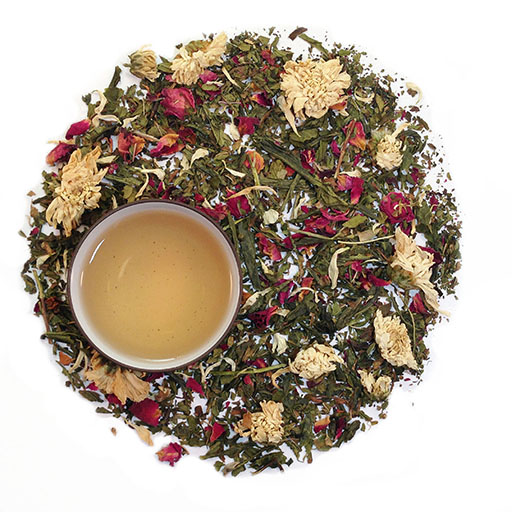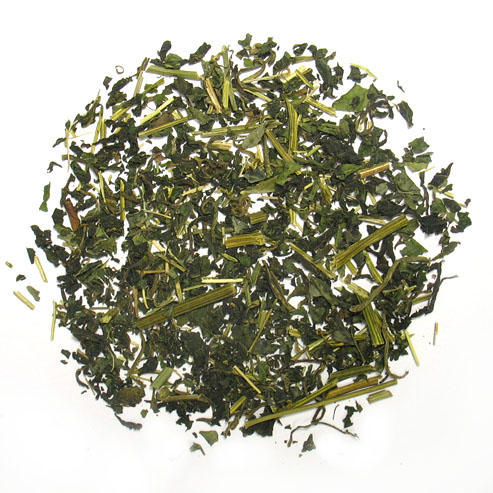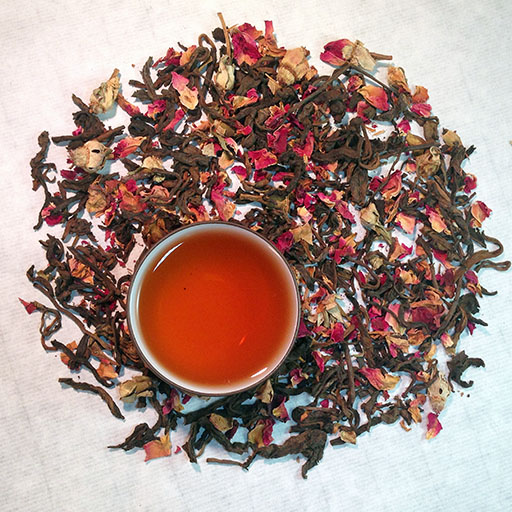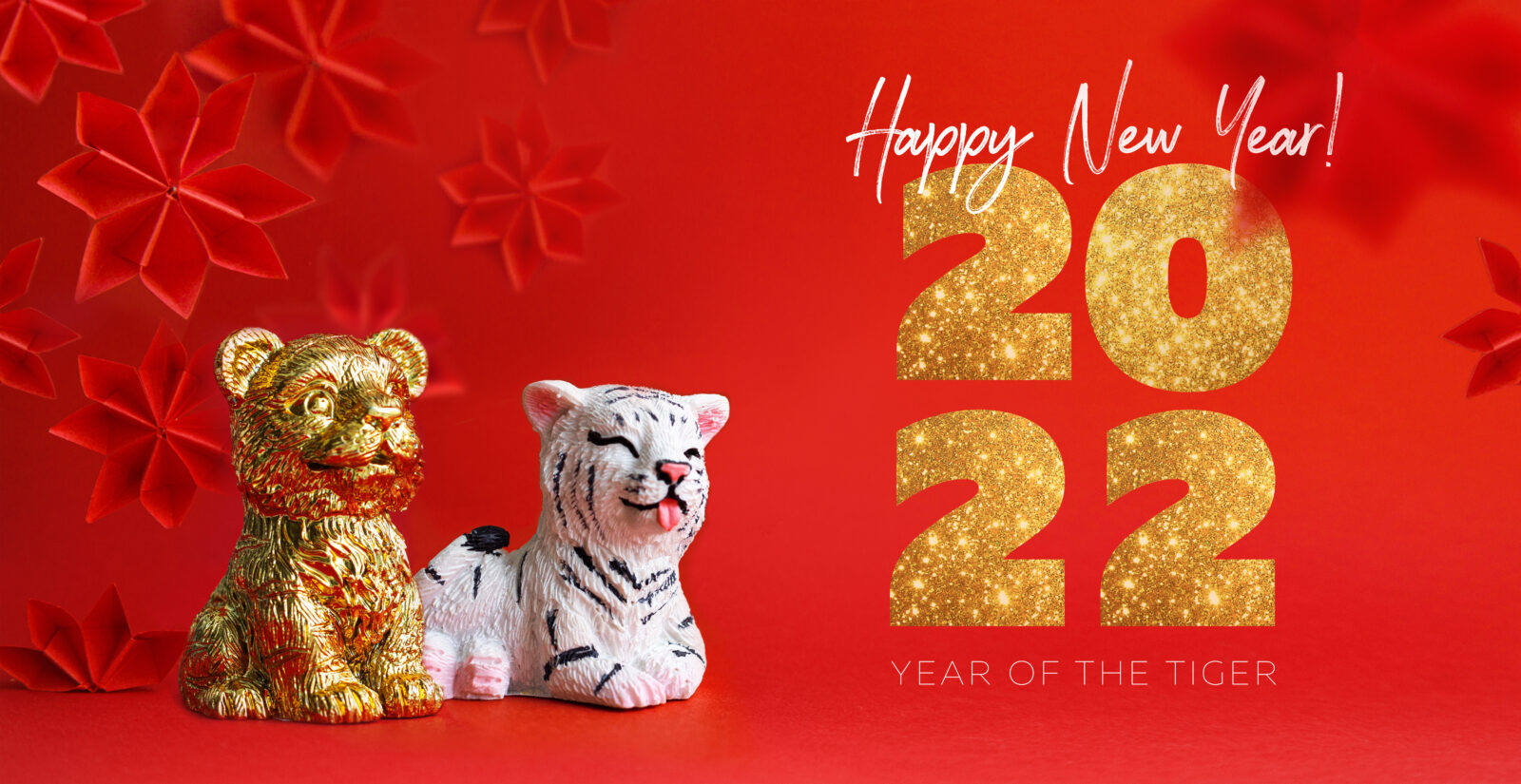Ring In The Year of the Tiger With These Powerful Tea Blends
Happy New Year!
Just three days ago, on January 24, preparations began around the world for celebrations of Lunar New Year. And this Tuesday, February 1, the festivities commence, and continue until the Lantern Festival on Feb. 15.
Lunar New Year is enormously important in China, and in other Asian countries. Asian people who live elsewhere — Boulder, Botswana, Brazil, you name it — also embrace it with keen enthusiasm. For many of us, it represents a deep part of our culture.
Among many other things, celebrants feast on long noodles, spring rolls, dumplings, rice cakes and more. They wear new clothes, hang decorative pieces of paper emblazoned with words — the most common is “fu,” which means happiness and good fortune — and present red pockets filled with money to loved ones.
And they drink a lot of tea. On the first day of the celebrations, for example, hosts often welcome guests with tea and sweet fruits. Sometimes, the tea itself is sweet, too. The symbolism is clear: the sweet treats represent hope for a sweet year.
Here’s to that!
As you start thinking about ways to embrace Lunar New Year at home, consider visiting this excellent website, which in exhaustive and clear detail lays out everything you need to know about the holiday: its history, background on the Chinese zodiac, foods and drinks to consume, how to decorate and so on.
And begin planning your New Year’s tea, too!
As we are exploring blended teas across January, we dive into a trio of blends that we think are perfect for Lunar New Year.
Lunar New Year Teas: Chrysanthemum Green Tea

Rituals surrounding Lunar New Year in China often touch on the theme of longevity, as in: live long! That’s why noodles slurped during the celebration are especially long, and why people eating them toil to bring the noodles into their mouths whole before chewing and swallowing.
Another ritual involves the presentation of yellow chrysanthemums to older family members; in China, the flowers are thought to prolong life due to their healthy properties.
This blend leans into the beautiful, aromatic flowers while also incorporating Japanese sencha green tea, peppermint and rose petals.
According to Chinese medicine, chrysanthemum supports lung health and reduces internal inflammations. As inflammation is the root of so many of our health problems, this gem covers a lot of ground!
Lunar New Year Teas: Immortal Tea

Here we go again — longevity!
Chinese medicine turns to a variety of botanical ingredients to help people pursue healthier lives. Many of them are entirely unknown to most people outside of China.
One of them, jiaogulan, is a climbing plant similar to cucumber that many practitioners of Traditional Chinese Medicine (TCM) use for managing conditions like diabetes, obesity and more. It is also known as “Southern Ginseng” (more on ginseng below), due to beliefs that it diminishes stress while also boosting energy. Another name for jiaogulan: “herb of immortality.”
Our Immortality Tea features this rare — for American consumers — and bitter botanical along with ginseng, which like jiaogulan is considered an adaptogenic herb, a class of plants that natural health specialists believe are essential for managing stress and delivering the body to homeostasis.
Ginseng is well-known for its energy-expanding properties, as well as its unique sweet, earthy flavor. In this blend, we use both ginseng and jiaogulan to deliver health to sippers.
Finally, the blend includes peppermint for its wonderful flavor and digestion-improving properties.
Lunar New Year Teas: Organic Rose Puerh

Finally, no conversation about longevity and tea should skip puerh, a unique style of fermented tea mostly from China’s Yunnan Region. People drink puerh for its distinct flavors — it often tastes of the earth (in a good way!), with notes of mushrooms, dried leaves, moss and dried herbs — but also for their health.
People who practice TCM send patients home with puerh to help with heart health, high cholesterol, eyesight, circulation and to promote weight loss. The tea is packed with vitamins, minerals and antioxidants that fight free radicals, unstable atoms in the human body that lead to inflammation.
This blend’s rose petals also are good for skin, while adding a delicate, pretty perfume to the blend.
We hope you all manage to participate in at least a little bit of Lunar New Year fun. One thing is for sure — we will celebrating the holiday from beginning to end!

